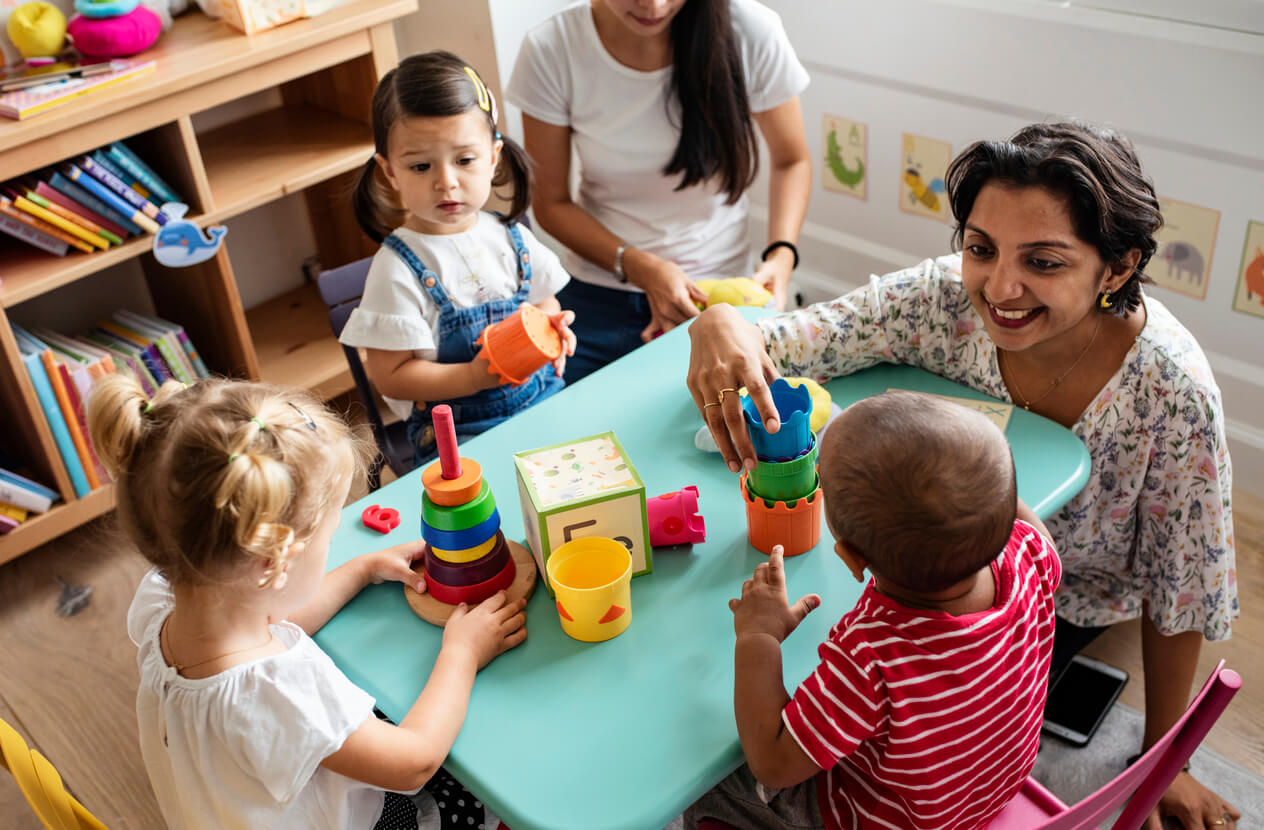The Romantic Pedagogical Model: What Does It Consist Of?


Written and verified by the psychopedagogue María José Roldán
There are many pedagogical methods, but the romantic model is one of the most innovative today. That’s why it’s so important to know exactly what it consists of and what the benefits of using it are.
What’s the romantic pedagogical model
This pedagogical model focuses on the child themself, making them more important than the content they have to learn. In this way, the child is given total freedom in the classroom so that they’re able to increase their potential without limiting it. This is a way to ensure that the child is able to develop their inner potential. Therefore, it’s a pedagogical method that’s based on flexibility in learning.
This is totally contrary to the traditional teaching system, which is governed by guidelines, rules, and content that must be learned at all costs. This is why the romantic pedagogical model is so innovative. In this method, there should be no interference in the environment that can restrict behavior and natural learning.
Therefore, it seeks development and teaching in which the child’s the protagonist all the time. The content, rules, and even the figure of the teacher themself will remain in the background to give the student total freedom to learn.

The advantages of the romantic pedagogical model
Once you know what this pedagogical model is about, you also need to know what the advantages of using it with children are. In this way, you’ll understand not only why it’s so innovative, but also why more and more teachers are choosing it.
Freedom
Absolute freedom is the basis of this model. It works in a free scenario so that children can advance in their learning. In this way, the possibilities of learning increase without the children feeling blocked by rules or limits. Consequently, the contents will depend on their pace and interest. Here, there’s no final exam where they have to prove that they’ve met the guidelines to learn the content.
This freedom will make children feel more predisposed to learn and the concepts will be assimilated in a better way, as they’ll only receive the content that interests them the most. As a result, they’ll learn what they consider important or what they like, and the retention of knowledge will be successful because it’ll take place in a totally voluntary way.
Self-regulation
This flexible learning environment provides children with better self-regulation in their behavior. In this way, they’ll learn how to behave in society in all kinds of situations.
What you want to achieve is that the little ones know how to behave, but without giving up their personality or their way of being. They’ll then learn to externalize and communicate their needs with the same respect with which they’re treated. In addition, being able to explore their environment without hindrance will also help prepare them for adult life. They’ll be able to resolve conflicts more satisfactorily and learn from mistakes.

The disadvantages of the romantic pedagogical model
Of course, this pedagogical method, like others, also has certain disadvantages that are worth mentioning. Some of the most important are the following:
- It’s a controversial model. Although children have freedom, they can’t attack the rights and freedoms of others.
- There’s no formal content. As it’s such a free model, the content that minors must learn for their good development is ambiguous. For example, what happens if they don’t assume all the necessary content for their age? Will they have a lack of content in those subjects they don’t like? How can this have an impact on their future?
- There are few teachers available. This model isn’t accepted by all teachers, so not all are willing to implement it. This is because of how chaotic it can be.
A model closer to utopia
Taking into account what has been explained about the romantic pedagogical system, it’s worth noting that in many countries where the content is regulated, it seems impossible to implement it in the classroom. At the very least, the current educational system isn’t prepared for this model. In fact, it seems to contain too many academic gaps to be able to be carried out correctly.
There are many pedagogical methods, but the romantic model is one of the most innovative today. That’s why it’s so important to know exactly what it consists of and what the benefits of using it are.
What’s the romantic pedagogical model
This pedagogical model focuses on the child themself, making them more important than the content they have to learn. In this way, the child is given total freedom in the classroom so that they’re able to increase their potential without limiting it. This is a way to ensure that the child is able to develop their inner potential. Therefore, it’s a pedagogical method that’s based on flexibility in learning.
This is totally contrary to the traditional teaching system, which is governed by guidelines, rules, and content that must be learned at all costs. This is why the romantic pedagogical model is so innovative. In this method, there should be no interference in the environment that can restrict behavior and natural learning.
Therefore, it seeks development and teaching in which the child’s the protagonist all the time. The content, rules, and even the figure of the teacher themself will remain in the background to give the student total freedom to learn.

The advantages of the romantic pedagogical model
Once you know what this pedagogical model is about, you also need to know what the advantages of using it with children are. In this way, you’ll understand not only why it’s so innovative, but also why more and more teachers are choosing it.
Freedom
Absolute freedom is the basis of this model. It works in a free scenario so that children can advance in their learning. In this way, the possibilities of learning increase without the children feeling blocked by rules or limits. Consequently, the contents will depend on their pace and interest. Here, there’s no final exam where they have to prove that they’ve met the guidelines to learn the content.
This freedom will make children feel more predisposed to learn and the concepts will be assimilated in a better way, as they’ll only receive the content that interests them the most. As a result, they’ll learn what they consider important or what they like, and the retention of knowledge will be successful because it’ll take place in a totally voluntary way.
Self-regulation
This flexible learning environment provides children with better self-regulation in their behavior. In this way, they’ll learn how to behave in society in all kinds of situations.
What you want to achieve is that the little ones know how to behave, but without giving up their personality or their way of being. They’ll then learn to externalize and communicate their needs with the same respect with which they’re treated. In addition, being able to explore their environment without hindrance will also help prepare them for adult life. They’ll be able to resolve conflicts more satisfactorily and learn from mistakes.

The disadvantages of the romantic pedagogical model
Of course, this pedagogical method, like others, also has certain disadvantages that are worth mentioning. Some of the most important are the following:
- It’s a controversial model. Although children have freedom, they can’t attack the rights and freedoms of others.
- There’s no formal content. As it’s such a free model, the content that minors must learn for their good development is ambiguous. For example, what happens if they don’t assume all the necessary content for their age? Will they have a lack of content in those subjects they don’t like? How can this have an impact on their future?
- There are few teachers available. This model isn’t accepted by all teachers, so not all are willing to implement it. This is because of how chaotic it can be.
A model closer to utopia
Taking into account what has been explained about the romantic pedagogical system, it’s worth noting that in many countries where the content is regulated, it seems impossible to implement it in the classroom. At the very least, the current educational system isn’t prepared for this model. In fact, it seems to contain too many academic gaps to be able to be carried out correctly.
All cited sources were thoroughly reviewed by our team to ensure their quality, reliability, currency, and validity. The bibliography of this article was considered reliable and of academic or scientific accuracy.
- Ignacio Erazo Arciniegas, Gerson., Alfredo Parra, Hugo. (2013) Modelos pedagógicos. Editorial: EAE
This text is provided for informational purposes only and does not replace consultation with a professional. If in doubt, consult your specialist.








